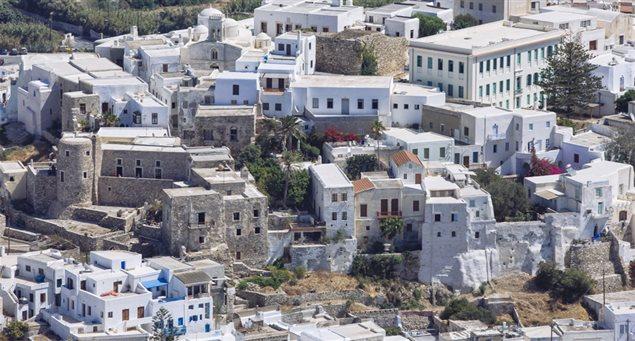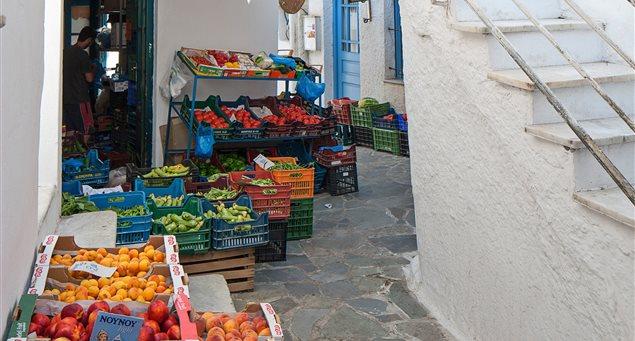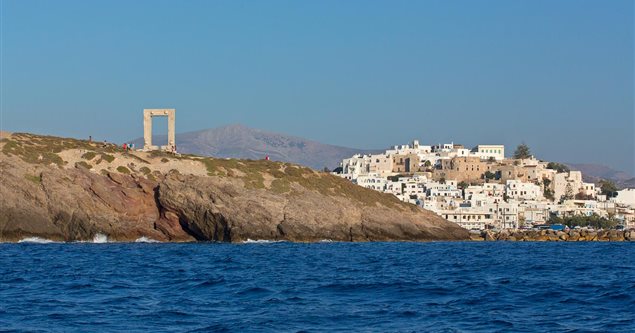
Take a walk through time and discover a world hidden behind the walls of the citadel of the Kastro district in Naxos’s old town.
Take note: When passing through the main wooden door Trani Porta that enters the Kastro (and the area within the walls of the castle) take note of the vertical incision on a marble pilaster this was a Venetian measure of length for the fabrics which traders sold to the aristocracy that entered and visited the castle.
Here is a quick guide to this unique little Cycladic city with influences of architecture and history covering centuries on end …
Entering the citadel via Trani Porta, you see the Della Rocca Barozzi Tower on the right. It is one of the oldest mansions in the Kastro vicinity and houses the Venetian and Folk History Museum, featuring the old furniture of the mansion and heirlooms of the era. The museum periodically also hosts painting and sculpture exhibitions.
Next to the Venetian Museum is the Tower of Crispi – the only one surviving of Kastro’s twelve towers that are believed to have originally stood to protect it. According to local legend, the tower served as the palace of the dynasty of the same name.
On the way to Kastro’s central square you see the Catholic Cathedral, a medieval building with marble floor and memorial stones depicting the family crests of some of the most prominent Catholic families that lived on the island in the last five centuries. You will note the distinct Byzantine, double-sided icon of Virgin Mary in an upright position. The other side depicts Saint John the Baptist.
Directly behind the Catholic Cathedral and next to the Catholic Episcopal Palace is the Orthodox Church of Panagia (Virgin Mary) Theoskepasti. This may well be the oldest of the citadel’s surviving monuments.
The Capuchin monastery is located east of Theoskepasti church, close to Kastro’s Piso Paraporti gate. It comprises a church, dedicated to San Antonio di Padua, and the main building. The church is single-aisled with impressive icons, while its marble flooring is decorated with the coats of arms of nobles such as the Coronelli-Castri and Lorentani-Crispo families.
The uphill street leads to the Naxos Archaeological Museum – one of undoubtedly special interest, with exhibits spanning thousands of years. It is housed in an old, five-storey mansion – the old School of Commerce, which author Nikos Kazantzakis attended for a year in his teens. Its exhibits include finds from Naxos and the neighboring islands of Keros, Donoussa and Koufonissia dating from the late Neolithic Age (4th millennium) to the early Christian era (6th century). Besides excellent specimens of Proto- Cycladic marble idols, which rival those in the Archaeological Museum of Athens.
Next to the School of Commerce is the Capella Kazatza church, built in the 13th century or, according to other scholars, in the 14th century. The School of Commerce is certain to have been established thanks to Capella’s strong financial standing – further bolstered as a result of donations made by worshippers from the 17th century onwards.
Opposite the Archaeological Museum is the Ursuline School and Monastery. The school began operating normally in 1739 but efforts to establish a girl school were first made a century earlier, by Frenchman Robert Saulger, the Jesuit superior and historian of Naxos. The property was purchased by the Greek state in 1986 and has since served as a cultural institution.



